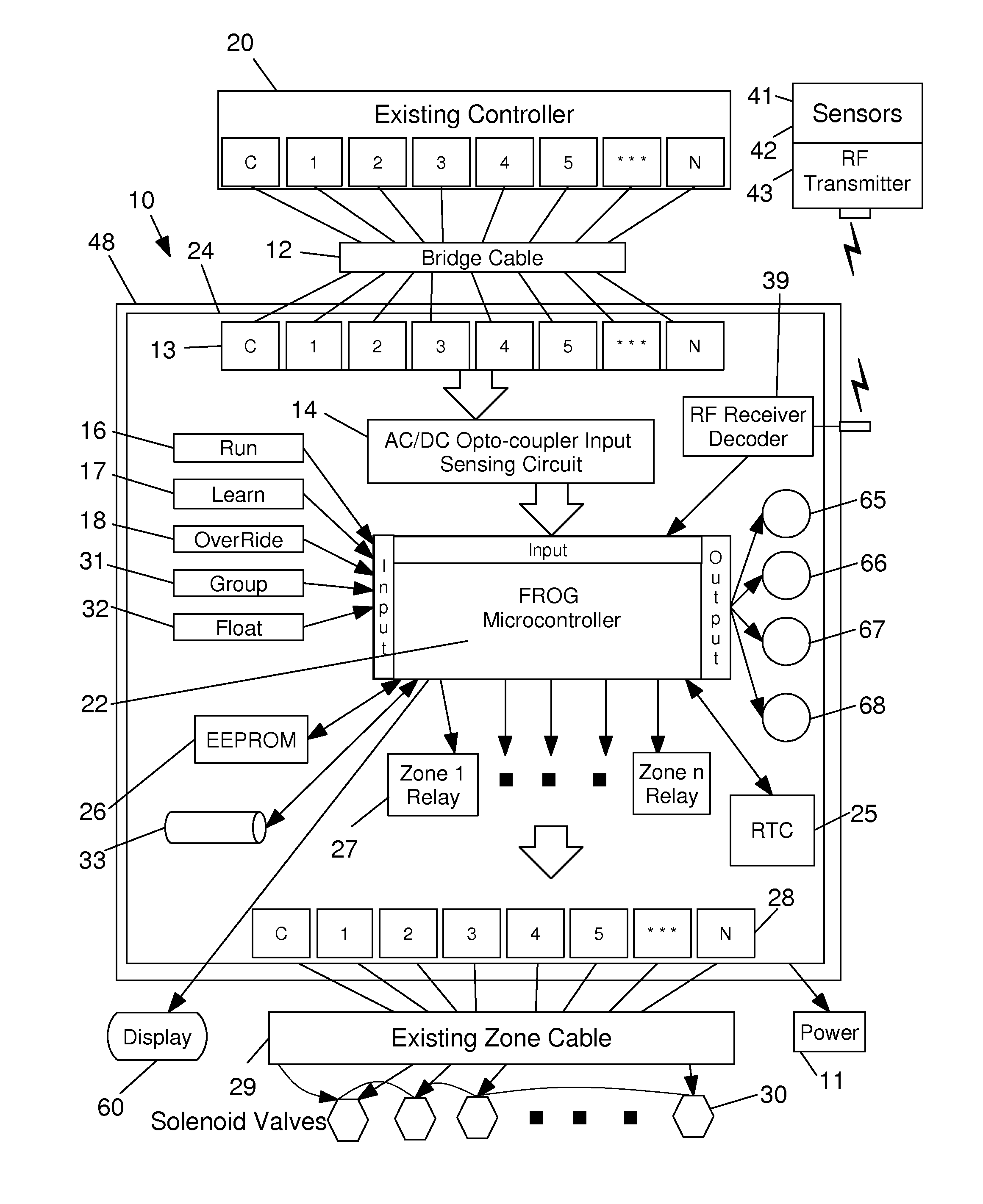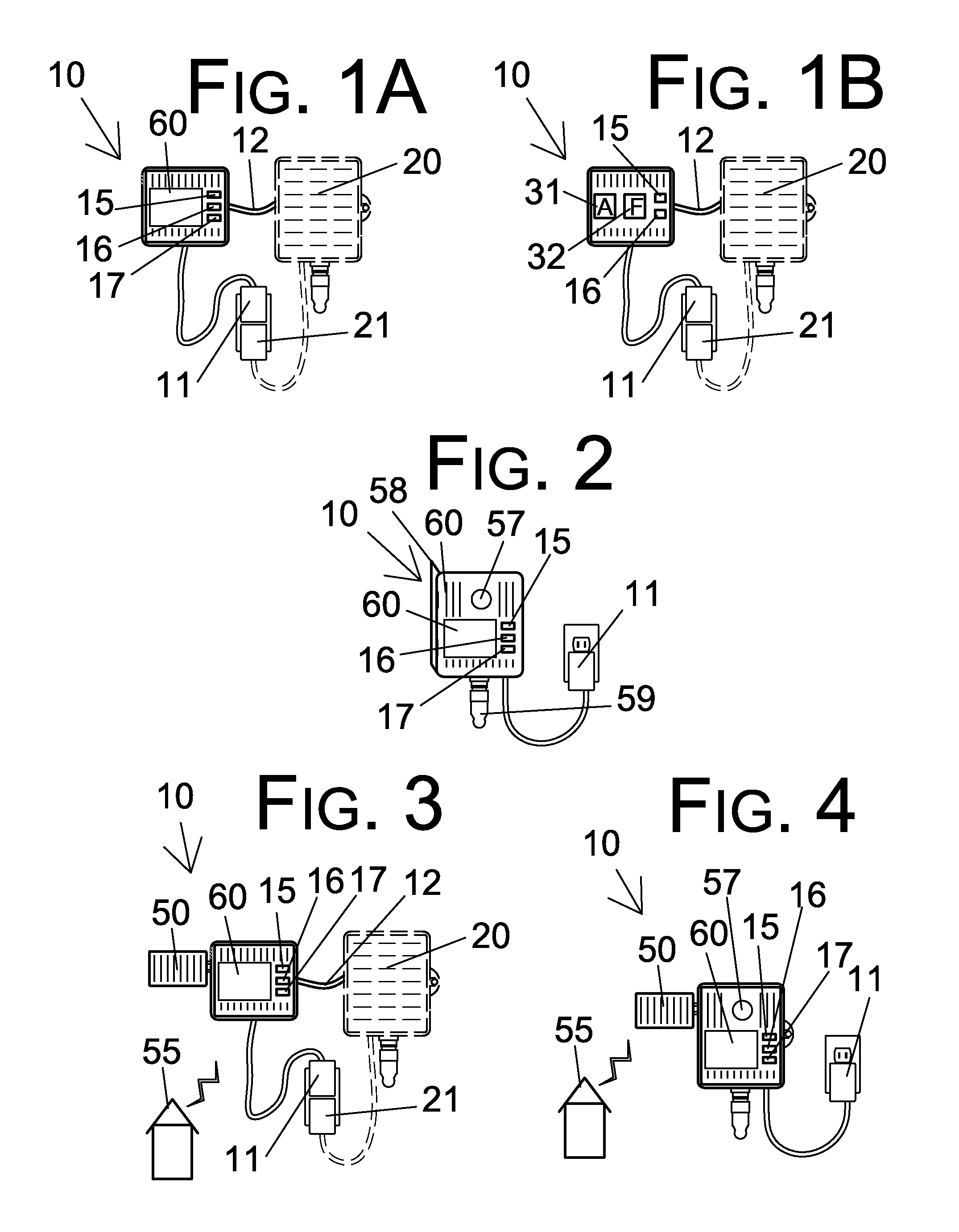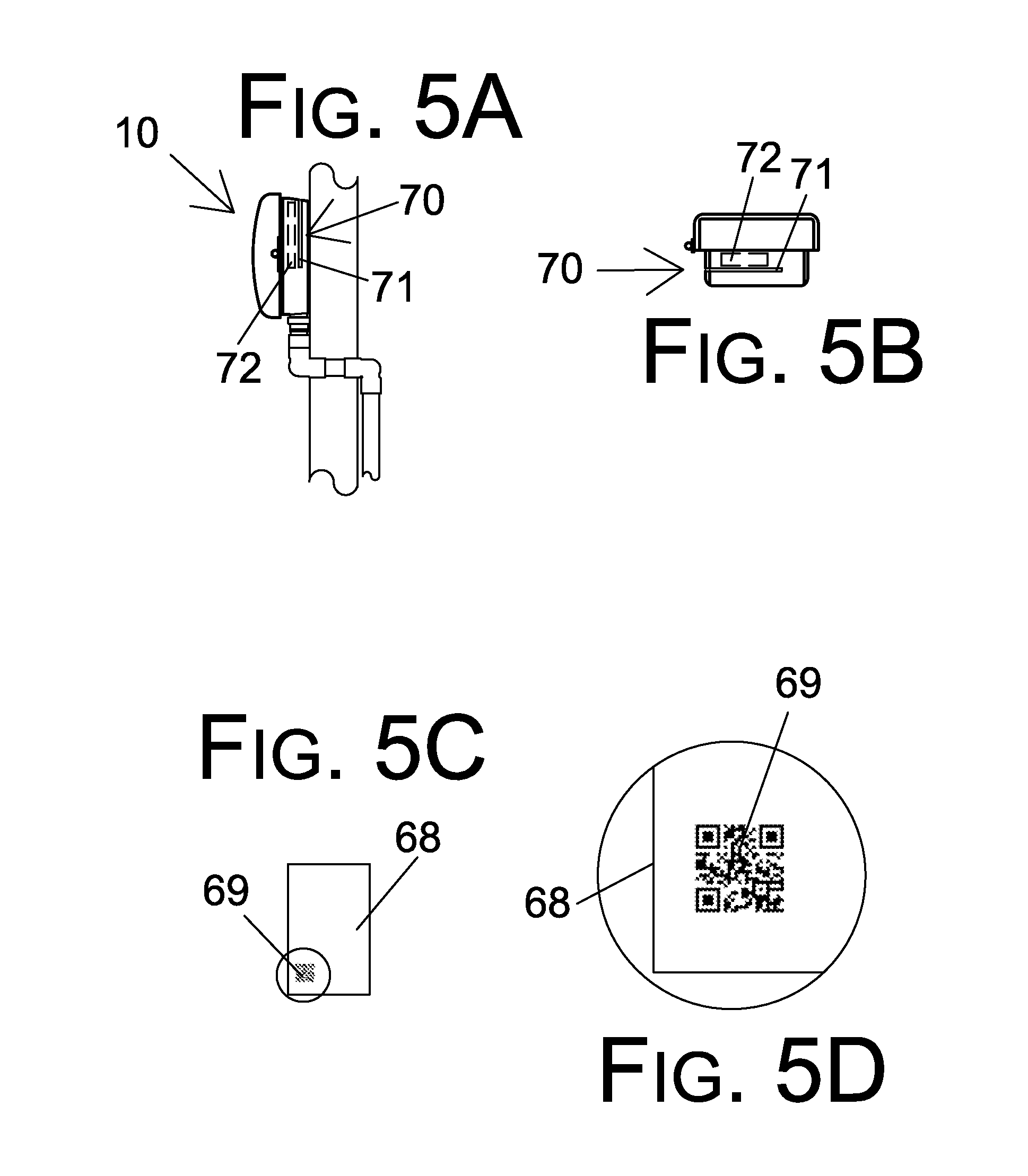Irrigation Controller and System Integrating No-Watering Restrictions and an Empirically-Derived Evapotranspiration Local Characteristic Curve
- Summary
- Abstract
- Description
- Claims
- Application Information
AI Technical Summary
Benefits of technology
Problems solved by technology
Method used
Image
Examples
first embodiment
Add-On Controller
[0071]Referring now to the first embodiment of FIG. 1, an add-on FROG controller 10 is designed to work with an installed existing controller 20 that has been user-programmed to take into account the appropriate watering needs of the plant types predominating in each individual irrigation zone of the user's landscape. For example, a zone comprising predominately turf may deploy sprayers scheduled to run on several days at several times per day for relatively long run-time durations; a zone comprising predominately trees and shrubs may deploy bubblers and drip emitters scheduled to run on fewer days at fewer times per day for relatively short run-time durations. Further, zones that are relatively shaded may be scheduled for start times and run-time durations reflecting a different and lower watering need due to the shaded conditions.
[0072]The add-on FROG controller 10 is in communication with existing irrigation controller 20, connected to the existing controller 20 ...
second embodiment
Manual Property-Specific Data Input
[0125]The second embodiment, shown in FIG. 2, of the FROG 10 is a comprehensive, standalone controller, which also utilizes the FROG integration of the present invention, but additionally is configured with all the functionality of a conventional irrigation controller, allowing a user to manually input property-specific data (watering days, start times, run-time durations for the various zones). There is no longer a need for the existing controller 20 or another conventional controller. The user should manually input the property-specific data representing the water budget and schedule for the middle of the summer for use in the FROG algorithm. The FROG algorithm then uses the property-specific data that has been manually input as a substitute for the property-specific data learned in the first embodiment, and calculates the water budget and schedule for the current day of the year.
[0126]In the second embodiment, conventional rotary dials 57, switc...
third embodiment
Sensor Input
[0127]The third embodiment of FIG. 3, FIG. 4, and FIG. 9 also utilizes the FROG integration and / or FROG algorithm of the present invention, but further includes at least one local or remote environmental sensor 41, 42 operable to measure environmental conditions, such as temperature, humidity, solar radiation, soil moisture, rainfall, or the like, as are known, or may become known, in the art. The local sensor may be disposed within or adjacent to the housing 48, 58 and may be directly or wirelessly connected to the main control unit 24.
[0128]With the remote sensor, a sensor module 60 may be included that is connectable to either the add-on FROG (FIG. 3) or the standalone FROG (FIG. 4). The sensor module 60 is operable to communicate with a remote weather station 55 (FIG. 3, FIG. 4, FIG. 9). Preferably, the environmental sensors 41, 42 are configured to communicate wirelessly with the main control unit 24, which is configured to receive and process the received remote se...
PUM
 Login to View More
Login to View More Abstract
Description
Claims
Application Information
 Login to View More
Login to View More - R&D
- Intellectual Property
- Life Sciences
- Materials
- Tech Scout
- Unparalleled Data Quality
- Higher Quality Content
- 60% Fewer Hallucinations
Browse by: Latest US Patents, China's latest patents, Technical Efficacy Thesaurus, Application Domain, Technology Topic, Popular Technical Reports.
© 2025 PatSnap. All rights reserved.Legal|Privacy policy|Modern Slavery Act Transparency Statement|Sitemap|About US| Contact US: help@patsnap.com



